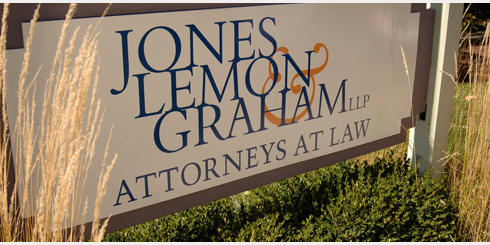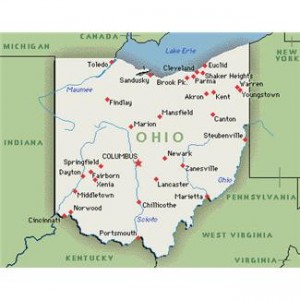by Christopher Graham and Joseph Kelly

The story: Today’s story comes from potato land. So to whet your appetite, our photo is an Idaho baking potato, rather than another boring state map. So let the story begin:
You’re an insurance underwriter. And you issue an extended professional liability policy to a bank. It’s a package policy including executive liability, company reimbursement, professional, lender, and securities liability, EPL, fiduciary, trust department, and other insuring agreements.
Under “lender liability” coverage, your company “will pay on behalf of the company, loss that is the result of a claim for lending wrongful act first made during the policy period or during the extended reporting period, if exercised.”
“Lending wrongful acts” means:
any actual or alleged error, misstatement, misleading statement, act or omission, or neglect or breach of duty by the company concerning an extension of credit, an actual or alleged failure or refusal by the company to extend credit; or an actual or alleged agreement by the company to extend credit.
“Lending wrongful act [also] includes the servicing of loans for others under a contract or agreement.”
Your policy says your company “shall have no duty to defend.” But “reasonable defense expenses” are covered.
Your policy also provides: “All claims involving interrelated wrongful acts shall be considered a single claim and shall be deemed to be have been first made when the earliest claim was first made.” And “interrelated wrongful acts” include “wrongful acts that have as a common nexus any fact, circumstance, situation, event, transaction or series of facts, circumstances, situations, events or transactions.”
Like all good underwriters, you don’t want to cover breach of contract claims. It wouldn’t make sense. The bank could contract with anyone, accept benefits, fail to perform, and simply have your company pay loss. What’s the incentive to perform? Isn’t this the “moral hazard” you learned about in underwriting school?
Your policy therefore includes a contractual liability exclusion common in professional and management liability and D&O policies. It provides:
The Insurer shall not be liable to make any payment for loss in connection with any claim based upon, arising out of, relating to, in consequence of, or in any way involving: … any assumption by the company or an insured person of any liability or obligation under any contract or agreement, or the failure to perform any contract or agreement, unless such company or insured person would have been liable even in the absence of such contract or agreement[.]
Your company thus will avoid paying loss from contract breach, unless liability exists absent a contract. So you think.
Policy issued. Premium paid. Claims-made policy term is about to expire. No claims. No reported circumstances. All is well.
But just before the policy’s August 30, 2009 expiration, a business sues the bank. It claims the bank reneged on a promise to make loans to fund construction of an RV and boat storage facility. It claims breach of contract. It also claims breach of an implied covenant of good faith, estoppel, and detrimental reliance.
Your company pays for the bank’s defense, reserving rights including to raise the contract liability exclusion.
Six months later, the business and bank conditionally settle. Bank agrees to make loans to the business, with bank and business to mutually release each other if the loans are made.
So, not too bad; this should be over. Right?
Later the bank and business disagree about funding a loan for project steel. Then in July 2010, well after the policy term, business and its owner, as an additional party, amend the complaint to include claims for breach of the settlement agreement and an implied covenant of good faith.
Your company continues paying for defense, while reserving rights. But then the court grants a summary judgment for the bank, leaving only the new counts for breach of the settlement agreement and related implied covenant.
That’s a great development. It’s especially great, you think, because those counts were claims made after the policy term, right? So not within the coverage? Plus don’t they fall squarely within the contract liability exclusion? Aren’t they claims “based upon” or at least “in any way involving” “a failure to perform any contract or agreement”? Your company thus discontinues funding the defense.
But the bank thinks differently and sues. Now it’s up to the black-robed one to decide. And . . .
The Court Decision: In a case generally along those lines, Idaho Trust Bank v. Bancinsure, Inc. et al, Case No. 1:12-cv-00032-REB (D. Idaho Mar. 20, 2014), this particular black-robed one held the post-policy period claims about breaching the settlement agreement and implied covenant were deemed made when the original claims were made. So during the policy period. And the contract exclusion didn’t apply, said this court. The policy, available on the Federal court’s Pacer system, fills gaps in the court’s opinion about material policy wording. So we’ve included that wording in this post.
Single policy period Claim/interrelated wrongful acts: The post-policy period claims–about the settlement agreement–and policy period claims–about the unfunded loans for a storage facility–“involve[ed] interrelated wrongful acts,” said the court. So, under the policy, they’re “considered a single claim” and “deemed to have been made when the earliest claim was first made”–namely, during the policy period.
In arguing the issue, insurer cited deposition “admissions” by business’s corporate designee that the claims were unrelated.
What sayeth the court? Although designee’s testimony “may lend some support for [insurer’s] position, it does not compel that result.” But not only did designee’s testimony not “compel the result,” it wasn’t even enough to create a fact issue requiring a trial. Based on deposition testimony and law, the court granted the business a summary judgment. While the court considered designee’s testimony “relevant,” the nature of the claims was shown by the pleadings regardless of designee’s characterization of them.
As the court explained:
Here, the [2009] Claim and 2010 Claim involve the same parties, the same lending relationship between the parties, and the same underlying subject matter (the steel for Hutchens’ proposed RV Facility). The definition of “interrelated wrongful acts” describes a broad range of relationships that is decidedly satisfied here. The [2009] Claim and 2010 Claim share as a common nexus, facts, circumstances and events. The 2010 Claim would not exist but for the attempts to settle the [2009] Claim. On that fully-faceted record, the Court has little difficulty concluding that the 2010 Claim is “interrelated” to the [2009] Claim, as defined in [insurer’s] Policy.
There are many cases supporting this decision, including those the court cited: WFS Financial, Inc. v. Progressive Casualty Ins. Co., Inc., 232 Fed. Appx. 624, 625 (9th Cir. 2007) (two class actions having as common basis defendant’s alleged wrongful business practice “interrelated” as alleged harms “causally related and do not present such an `attenuated or unusual’ relationship that a reasonable insured would not have expected the claim to be treated as a single claim under the policy”); Highwoods Props. v. Exec. Risk Indem., Inc., 407 F.3d 917, 924-25 (8th Cir. 2005) (though alleging different legal theories, suits related as they alleged insured provided shareholders misleading information for merger approval); Capital Growth Financial LLC v. Quanta Specialty Lines Inc. Co., 2008 WL 2949492, *4-5 (S.D. Fla. July 30, 2008) (although involving different investors, additional or different investments, and unique allegations about specific misrepresentations, claims related as they all alleged pattern of unsuitable and risky investments by insureds).
Contract exclusion: The court also said the contract liability exclusion didn’t apply.
The broadly worded lender liability insuring agreement doomed this insurer, in this court’s view. The contract liability exclusion couldn’t be reconciled with the broad coverage grant–said the court.
As the court explained:
[The business owner’s] allegations with respect to the 2010 Claim [(about the settlement agreement)], although identified as “breach of contract” and “breach of the implied covenant of good faith and fair dealing,” stem from his allegation that [bank] promised to extend a loan and subsequently failed to do so. This falls squarely within the definition of a “lending wrongful act.”
And, yes, that’s true: “Lending wrongful act,” under the lender liability insuring agreement, included “any actual or alleged error, misstatement, misleading statement, act or omission, or neglect or breach of duty by the company concerning . . . an actual or alleged failure or refusal by the company to extend credit . . . .”
As the court also explained:
[S]uch an exclusion [(namely, the contract liability exclusion)] would not be enforceable as it would eliminate coverage for something otherwise clearly covered under the Policy. An insurer cannot seek to apply policy limitations and exclusions in a way to defeat the precise purpose for which the insurance is purchased. [Citation omitted] While the Court does not find the contractual liability exclusion to render the Policy completely illusory, the Court will not enforce it against [bank] on the particular facts in this case. Again, the Court emphasizes that an insurer cannot in one section provide coverage for acts that include “an actual or alleged agreement” and then, in another section, attempt to exclude coverage for claims “based upon [or] arising out of” “the failure to perform any contract or agreement[.]” These two sections cannot be reconciled and therefore the Court construes the exclusion against [insurer] and finds that there is coverage for the 2010 Claim under the Policy.
In this court’s view, the insurer by the contract liability exclusion took away the coverage it promised in the insuring agreement.
Distinguishing insurer’s cases applying similar exclusions, the court stated: “[Insurer’s] Policy is unique from the policies at issue in the cases cited by [insurer] in that it expressly states it covers ‘lending wrongful acts’ which include ‘an actual or alleged agreement by the company to extend credit’ but then excludes coverage for ‘any liability or obligation under a contract.'”
So the breach of contract claim was covered. And it didn’t matter that, under Idaho law, the good faith and fair dealing claim sounded “in contract” rather than tort.
Comments: Whether claims involve interrelated wrongful acts is frequently litigated. And this blog has discussed other decisions on that issue including here and here. With “interrelated wrongful acts” broadly defined, the court’s conclusion is no surprise. Somewhat surprising is the insurer argued against relatedness. Insurers in reported decisions are frequently arguing the opposite and winning in circumstances like these.
Contract liability exclusions also are frequently litigated as reported in this blog here and here. This case is unique because of the broad lender liability insuring agreement, incorporating the broad lending wrongful act definition.
But it’s not unusual for insureds to argue an exclusion took away what insurer agreed to cover and, thus, that coverage is illusory. That narrowing should be a problem, however, only when it leaves nothing material covered. As Allan Windt, a leading insurance commentator states with ample citations in “Insurance Claims and Disputes”: “The correct rule . . . is that an insurance policy does not afford illusory coverage if some material coverage is afforded.” Not surprising. There’s nothing illusory about insurance if it provides material coverage, even if an exclusion narrows the coverage grant. The point of an exclusion after all is to narrow coverage
This court acknowledged that, notwithstanding the contract exclusion, there was material coverage under the lender liability insuring agreement. That was evidenced at least by the insurer’s funding of the bank’s defense up until all the settlement breach and implied covenant claims were the only claims remaining. But in this court’s view, the “two sections [(the coverage grant and contract exclusion)] cannot be reconciled.” And so it “construes the exclusion against the insurer. . . .”
But were the coverage grant and exclusion really irreconcilable? Why wasn’t it reasonable to say that coverage for a loss from claims based on acts, omissions or the like concerning a loan, refusal to make a loan, or agreement to make a loan, is limited to claims where the bank or another insured “would have been liable even in the absence of such contract or agreement”? So, for example, lender liability claims in tort, rather than contract? Doesn’t this reconcile the lender liability insuring agreement and contract exclusion? It seems that this exclusion narrowed the lender liability exclusion just as an exclusion is supposed to, that there was material coverage left notwithstanding the exclusion, and that the coverage grant and exclusion were reconcilable. Maybe an appeal?
So what’s an underwriter to do? Don’t count on courts. Don’t put your company in a position where it has to litigate this issue. Time to revisit the insuring agreements. Look at cases this court cites where the exclusion was enforced and, in this court’s view, there was no issue with reconciling the coverage grant and the contract exclusion. How about that for a start?
Tags: Idaho, professional liability, contract exclusion, interrelated wrongful acts, related wrongful acts, lending wrongful acts, illusory coverage, bankers professional liability policy, BPL policy, lender liability, D&O insurance, management liability insurance










